On the second week of April I was recruited to help process Ubuyama's freshly harvested takana while on my way to the laundromat. I pulled into the parking lot and was surprised to find it being used as a loading dock. I swerved to avoid the scattered pyres of takana and a forklift with a full load (a vegetable that looks like a cross between celery, bok choi, and spinach) and proceeded to unload two heaping baskets full of wet clothes bound for the driers. A farmer approached me and asked for my help. Even though I had only met him a couple of times before, I dropped what I was doing and headed into the warehouse to lend a hand.
Inside I met many more of my students' parents, all relaxing and eating some real country Japanese food. They served me some smoked cod that had so much salt on it, that it was almost painful to taste along with takana musubi and assorted tsukemono. They explained that this fish was a traditional food in Ubuyama. In the old days, before the 57 was built, they could not get fresh seafood, so it had to be heavily salted in order to survive the trip inland. When we finished eating, we got to work.
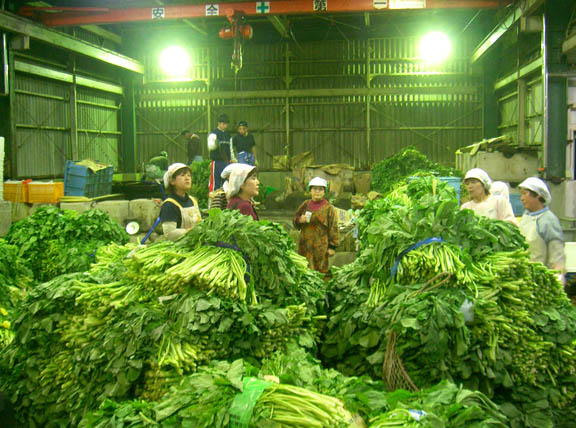
The okusans are taking an ocha break and shooting the breeze in between frantic shifts.
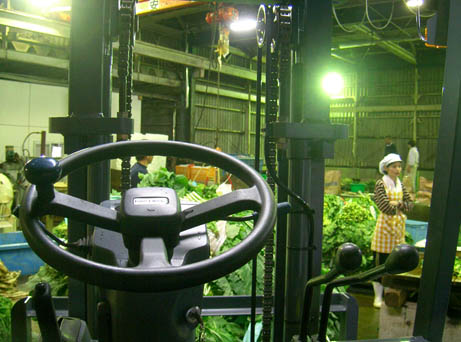
View from behind the forklift.
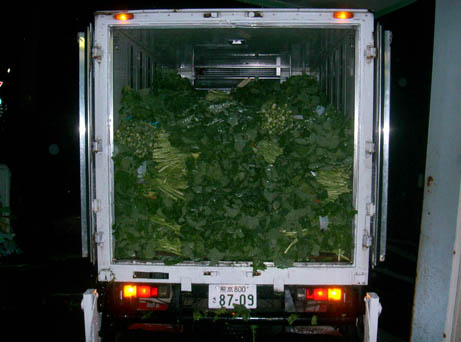
One of the trucks that was bringing in load after load of takana.
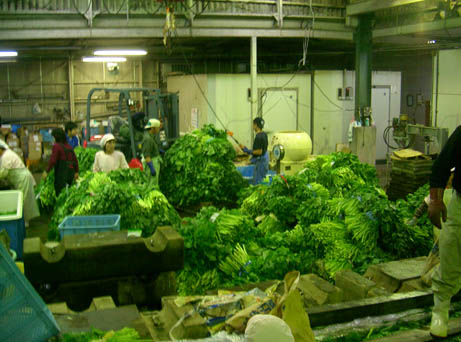
The crane is busy hoisting palettes of takana up to fill the waiting pits, and the rain hammers down on the corrogulated tin roof, mirroring our manic pace.
You can make takana tsukemono in small batches 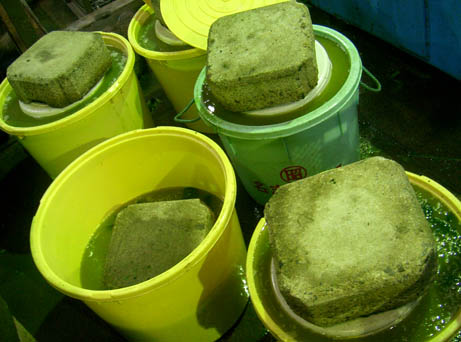 , but we were using industrial sized pools, about 3 cubic meters in volume
, but we were using industrial sized pools, about 3 cubic meters in volume 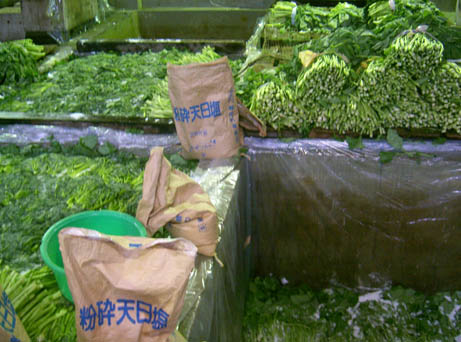 . Two people toss down bales of takana to the workers down below who spread out the takana. Layer after layer of takana is first arranged in lines and rows running perpendicularly to the layer below it. The takana is then amply salted (literally bucket fulls of salt are used, about 1 10 kilo bag per 4 layers in my estimation)
. Two people toss down bales of takana to the workers down below who spread out the takana. Layer after layer of takana is first arranged in lines and rows running perpendicularly to the layer below it. The takana is then amply salted (literally bucket fulls of salt are used, about 1 10 kilo bag per 4 layers in my estimation)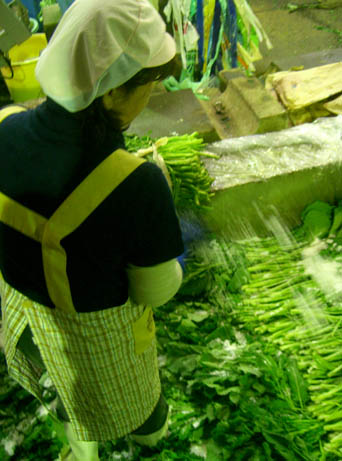 . Next comes the labor intensive part. Everyone jumps in the pit, and stomps on the takana
. Next comes the labor intensive part. Everyone jumps in the pit, and stomps on the takana 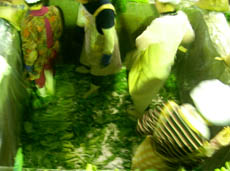 until the bright green leaves of the takana turn dark green
until the bright green leaves of the takana turn dark green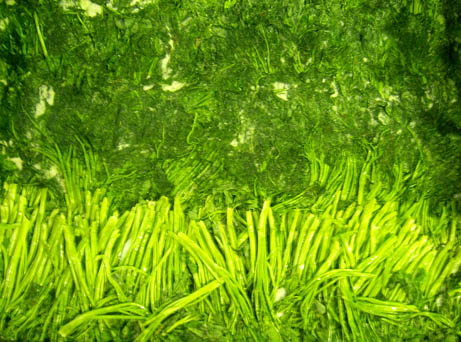 . This is important though: you should not crush the stalk of the takana, only the leaves (or else the takana will not have its satisfying crunchy texture). This part of the process is what I imagine it is like to stomp on grapes to make wine. Yes, part of the brine in the takana comes from the sweat of hard work.
. This is important though: you should not crush the stalk of the takana, only the leaves (or else the takana will not have its satisfying crunchy texture). This part of the process is what I imagine it is like to stomp on grapes to make wine. Yes, part of the brine in the takana comes from the sweat of hard work.
It is astounding to see how many layers of takana can fit into one pit. The average was about 45, and one seasoned obachan said that back in the day, she was able to cram 55 layers of the stuff into one of the vessels. It took about 2 hours to completely fill one of the pits full to the brim. Next, the takana is wrapped in plastic, and about 8 huge tsukemono stones (with the help of a crane) are lowered on the bale 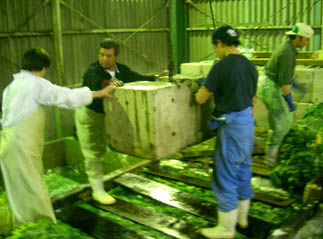 and allowed to sit for a couple of hours. The immense weight further crushes and compresses the takana, and a green brine rises to the surface
and allowed to sit for a couple of hours. The immense weight further crushes and compresses the takana, and a green brine rises to the surface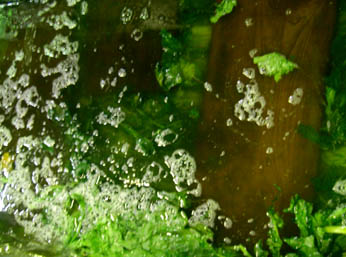 and is siphoned off
and is siphoned off 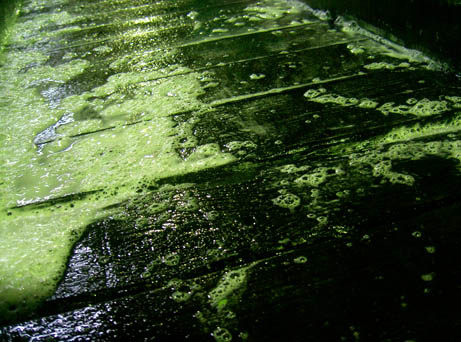 . The takana is either re-wrapped
. The takana is either re-wrapped 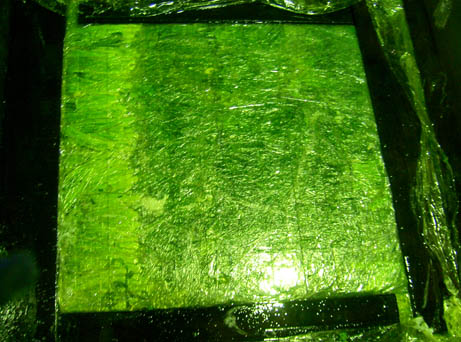 , and allowed to cure for two to three months, or a fresher version is packed immediately the next day.
, and allowed to cure for two to three months, or a fresher version is packed immediately the next day.
The warehouse has about 20 of these bales curing, and the profits (not net) will make the farmers about 5,000,000 yen (a little less than 50,000 dollars). To give you an idea of how much takana was used, these are the plastic strips that bound them into smaller bunches 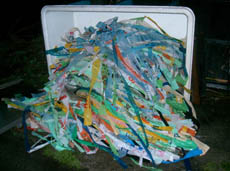 .
.
kewl. send me a kilo.
You got it, as soon as they peel open the pits. There's enough takana in the warehouse to supply Aso Gun for half of a year!